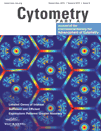|
Purpose:
|
Animal models have highlighted the importance
of innate lymphoid cells (ILCs) in multiple immune
responses. However, technical limitations have
hampered adequate characterization of ILCs in humans.
Here, we used mass cytometry including a
broad range of surface markers and transcription
factors to accurately identify and profile ILCs
across healthy and inflamed tissue types. High
dimensional analysis allowed for clear phenotypic
delineation of ILC2 and ILC3 subsets. We were
not able to detect ILC1 cells in any of the tissues
assessed, however, we identified intra-epithelial
(ie)ILC1-like cells that represent a broader category
of NK cells in mucosal and non-mucosal pathological
tissues. In addition, we have revealed the
expression of phenotypic molecules that have not
been previously described for ILCs. Our analysis
shows that human ILCs are highly heterogeneous
cell types between individuals and tissues. It also
provides a global, comprehensive, and detailed
description of ILC heterogeneity in humans across
patients and tissues.
|
|
Comments:
|
IMPORTANT: All files come from CyTOF experiment.
Some of the FCS files are "raw", they contain debris, dead cells, CD45- cells. We attached a flowjo10 (mac) workspace with gating strategy which can be use to remove debris, dead cells, etc.
Data acquired using CyTOF1 and CyTOF2.
Human samples only.
Refer to Simoni et al, Immunity 2017 (doi: 10.1016/j.immuni.2016.11.005)
|

